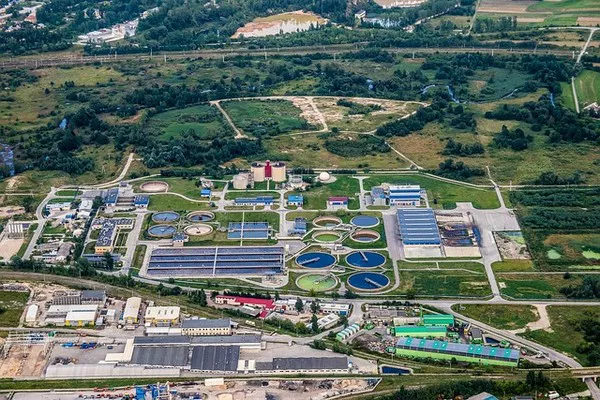Sewage treatment is a crucial process that plays a pivotal role in preserving public health, safeguarding the environment, and ensuring the responsible use of our natural resources. Wastewater, often laden with contaminants and pollutants, poses a significant threat to human well-being and the ecosystem when left untreated. In this article, we delve into the intricacies of sewage treatment, exploring its processes, significance, and environmental impact.
The Wastewater Challenge
Sewage, in essence, is a byproduct of human activity. It consists of a complex mixture of liquid and solid waste, often containing organic matter, nutrients, pathogens, and various chemicals. Without proper treatment, sewage poses serious health risks to both humans and the environment. Contaminated water can lead to the spread of waterborne diseases, environmental degradation, and the depletion of vital water resources.
Sewage Treatment Processes
Sewage treatment involves several distinct processes designed to remove impurities and contaminants from wastewater, rendering it safe for discharge or reuse. These processes typically include:
Preliminary Treatment: The first step involves removing large solids and debris from the wastewater. Screening devices, such as bar screens and grit chambers, are used to separate objects like sticks, plastics, and sand.
Primary Treatment: During this phase, the wastewater undergoes physical separation, where heavier solids settle at the bottom of a sedimentation tank, forming a sludge. Lighter materials, such as oils and grease, float to the surface and are skimmed off. The partially treated water, now known as primary effluent, moves on to secondary treatment.
Secondary Treatment: Secondary treatment employs biological processes to further purify the wastewater. Microorganisms, typically bacteria and fungi, break down the organic matter in the water, converting it into harmless byproducts like carbon dioxide and water. The two main methods of secondary treatment are activated sludge and trickling filters.
Tertiary Treatment: In some cases, additional treatment is required to meet stringent water quality standards or to enable safe water reuse. Tertiary treatment often involves advanced filtration, chemical treatment, and disinfection processes, such as chlorination or ultraviolet (UV) radiation, to eliminate remaining contaminants.
Sludge Treatment: The solids removed during primary and secondary treatment, referred to as sludge, undergo separate treatment. This process may include thickening, dewatering, and further biological or thermal treatment to reduce its volume and minimize environmental impact.
Discharge or Reuse: Once treated, the water is either discharged into receiving bodies of water, such as rivers or oceans, or reclaimed for various purposes, including irrigation, industrial processes, or direct potable use.
Significance of Sewage Treatment
The significance of sewage treatment cannot be overstated. Here are some of the key reasons why sewage treatment is crucial:
Public Health Protection: Proper sewage treatment is fundamental in preventing the spread of waterborne diseases. Removing pathogens and contaminants from wastewater ensures that the water supply remains safe for consumption and recreational activities.
Environmental Conservation: Untreated sewage poses a significant threat to aquatic ecosystems. The release of excessive nutrients, such as nitrogen and phosphorus, can lead to harmful algal blooms, oxygen depletion, and the decline of aquatic life. Sewage treatment helps mitigate these adverse impacts.
Resource Conservation: Wastewater contains valuable resources, including water and organic matter. By treating and reclaiming sewage, we can conserve precious freshwater resources and harness energy and nutrients from the organic content in sewage.
Compliance with Regulations: Governments worldwide have established strict regulations and standards for the discharge of wastewater. Effective sewage treatment ensures compliance with these regulations, preventing legal issues and penalties.
Environmental Impact of Sewage Treatment
While sewage treatment has a profoundly positive environmental impact, it is essential to recognize that the process itself can have some environmental implications. These include:
Energy Consumption: Some sewage treatment processes, particularly tertiary treatment methods, can be energy-intensive. The electricity required for pumping, aeration, and disinfection contributes to the carbon footprint of treatment plants.
Chemical Use: Certain sewage treatment processes involve the use of chemicals, such as chlorine or coagulants. Improper handling or disposal of these chemicals can have negative environmental consequences.
Sludge Management: The treatment and disposal of sewage sludge require careful consideration. Inappropriate handling or disposal of sludge can lead to soil and groundwater contamination.
Habitat Impact: The construction and operation of sewage treatment facilities may disrupt local habitats and ecosystems. Proper site selection and mitigation measures are essential to minimize these impacts.
Future Trends in Sewage Treatment
As societies strive for more sustainable and environmentally friendly solutions, sewage treatment is also evolving. Some key trends and innovations in sewage treatment include:
Resource Recovery: Sewage treatment plants are increasingly incorporating technologies to recover resources from wastewater, including the extraction of energy, nutrients, and freshwater.
Decentralized Systems: Decentralized sewage treatment systems, which can be applied at a smaller scale, are gaining popularity. These systems are more adaptable and can reduce the need for extensive sewer networks.
Advanced Treatment Technologies: The adoption of advanced treatment technologies, such as membrane filtration, UV disinfection, and nutrient removal processes, is improving the quality of treated wastewater.
Green Infrastructure: Green infrastructure approaches, such as constructed wetlands and vegetated swales, are being integrated into sewage treatment to enhance natural filtration and reduce energy consumption.
Conclusion
Sewage treatment is an essential aspect of modern society that plays a vital role in preserving public health and protecting the environment. By effectively treating wastewater, we can prevent the spread of diseases, safeguard ecosystems, and conserve valuable resources. While sewage treatment itself has some environmental impacts, ongoing advancements and sustainable practices are shaping the future of wastewater management toward greater efficiency and environmental responsibility.

